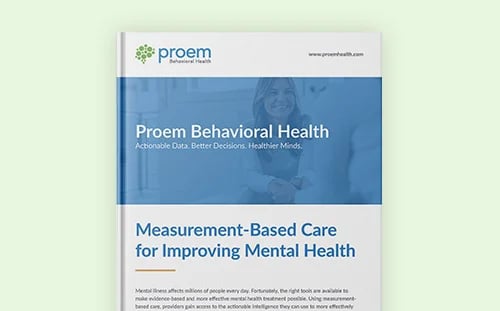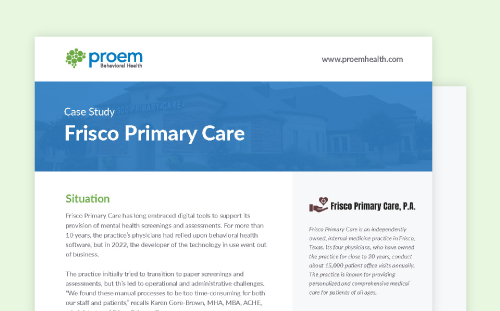Every June, Lesbian, Gay, Bisexual, Transgender, Queer, and Intersex (LGBTQI+) Pride Month is celebrated in the United States. As the Library of Congress notes, the month was chosen to honor the 1969 Stonewall Uprising in Manhattan, which took place on June 28, 1969, and was a "tipping point" for the Gay Liberation Movement in the United States.
 With Pride Month putting the spotlight on the rights and progress of the LGBTQI+ community in America, we want to highlight the mental health struggles many in this community face in the hope of helping raise awareness and better ensuring they receive the care and support needed to enable the right outcomes.
With Pride Month putting the spotlight on the rights and progress of the LGBTQI+ community in America, we want to highlight the mental health struggles many in this community face in the hope of helping raise awareness and better ensuring they receive the care and support needed to enable the right outcomes.
LGBTQI+ Mental Health Facts and Figures
The following are 19 facts and figures about the LGBTQI+ community and mental health.
- Identifying as LGBTQI+ is not a mental illness or disorder. The American Psychiatric Association removed homosexuality from the DSM in 1973. Up to that point in time, it had been listed as a sociopathic personality disorder.
- The American Psychological Association publicly supported this move by the American Psychiatric Association in 1975, stating that "homosexuality per se implies no impairment in judgment, reliability or general social and vocational capabilities…(and mental health professionals should) take the lead in removing the stigma of mental illness long associated with homosexual orientation."
- Approximately 40% of LGBTQ+ adults have experienced a mental illness in the past year whereas 18% of all adults have faced a mental illness in the same year.
- LGBTQ individuals are more than twice as likely as heterosexual men and women to have a mental health disorder in their lifetime.
- LGBTQ individuals are 2.5 times more likely to experience depression, anxiety, and substance misuse compared with heterosexual individuals.
- LGBTQIA+ teens are six times more likely to experience symptoms of depression than teens identifying as heterosexual.
- A survey of LGBTQ youth found that 60% of LGBTQ youth who wanted mental health care in the past year were unable to get it.
 Among the most frequently cited barriers to LGBTQ youth receiving mental health treatment are affordability of care, previous negative experiences, transportation obstacles, not wanting to secure parental permission, and parents who refused to allow care.
Among the most frequently cited barriers to LGBTQ youth receiving mental health treatment are affordability of care, previous negative experiences, transportation obstacles, not wanting to secure parental permission, and parents who refused to allow care.- LGB youth are more than twice as likely to report persistent feelings of sadness or hopelessness than heterosexual peers.
- LGBTQ youth are four times more likely to seriously consider suicide, plan for suicide, and attempt suicide than their peers.
- One study found that LGBTQ+ people used mental health services at 2.5 times higher rates than their heterosexual counterparts.
- Only about 13% of mental health facilities and 18% of substance misuse facilities in the United States have LGBT-specific programs.
- Transgender individuals are nearly four times as likely as those whose gender identity corresponds with their birth sex (i.e., cisgender) to experience a mental health condition.
- LGBTQ+ people are at higher risk of developing post-traumatic stress disorder (PTSD), with prevalence estimates of up to 48% of LGB individuals and 42% of transgender and gender-diverse individuals meeting criteria for PTSD — estimates which are much higher than the general population prevalence.
- LGB adults are nearly twice as likely as heterosexual adults to experience a substance use disorder (SUD).
- Transgender individuals are almost four times as likely as cisgender individuals to experience a SUD.
- Over a majority of LGBTQ+ adults of color in the United States face significant mental health challenges.
- LGBTQ+ high schoolers of color in the United States are more likely to attempt suicide (27%) compared to LGBTQ+ high schoolers (22%) and non-LGBTQ+ high schoolers (5%).
- Most suicide attempts (61%) among LGBQ people occurred within five years of realizing one's sexual minority identity.
Sources:
- ADAA (Anxiety & Depression Association of America)
- American Psychiatric Association
- Centers for Disease Control and Prevention
- Health Services Research
- Healthline
- Human Rights Campaign
- Journal of Homosexuality
- Journal of Interpersonal Violence
- Journal of Psychiatric Research
- Mental Health America
- National Alliance on Mental Illness
- Transgender Health
- The Trevor Project
- S. Department of Veterans Affairs
- Williams Institute at UCLA School of Law





.png)
-1.gif)





